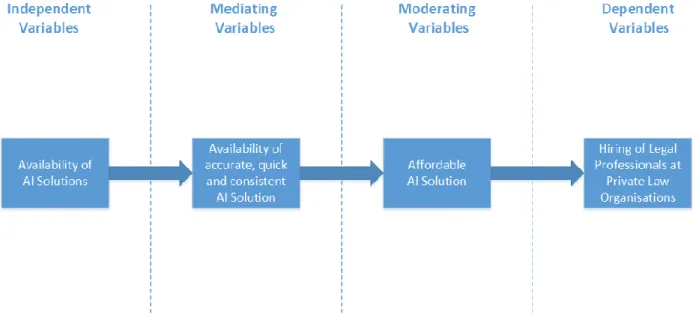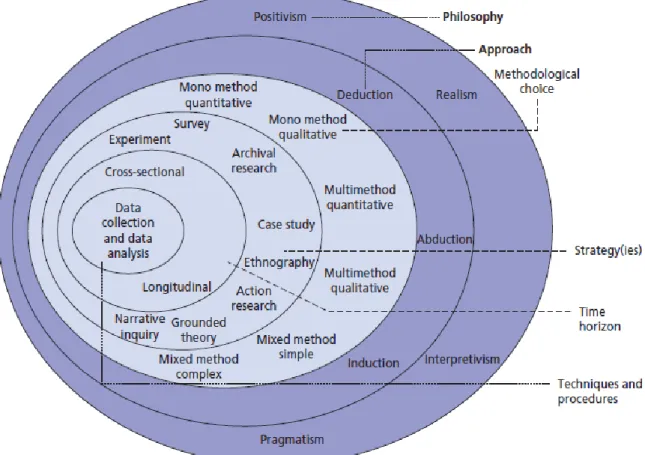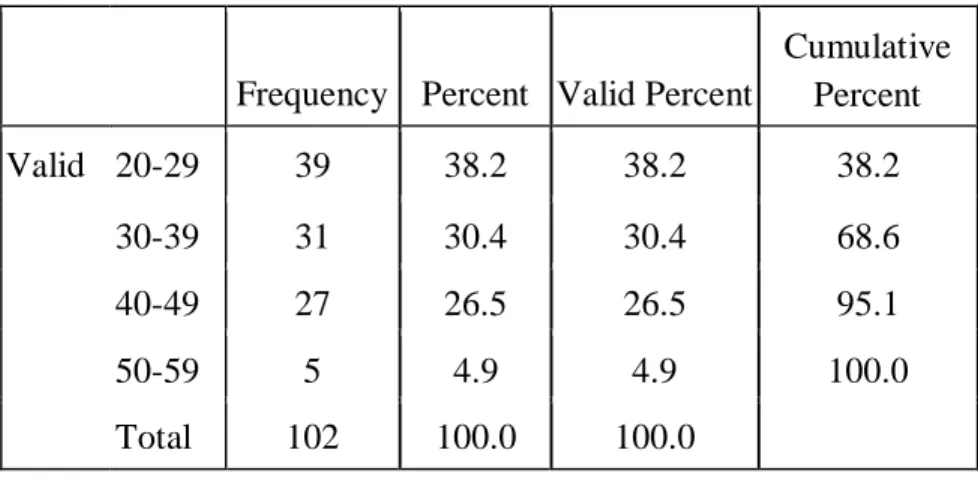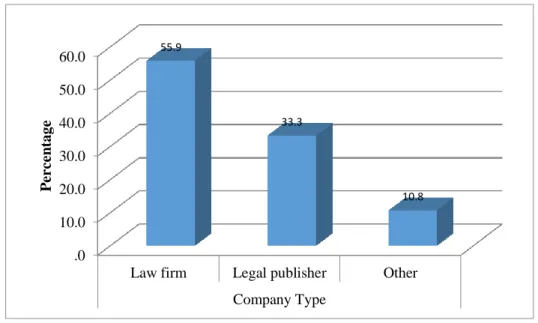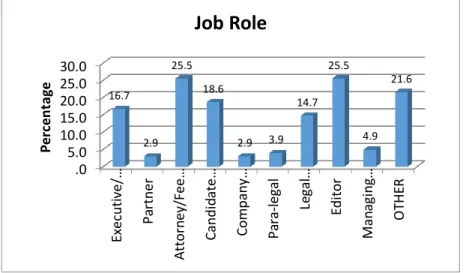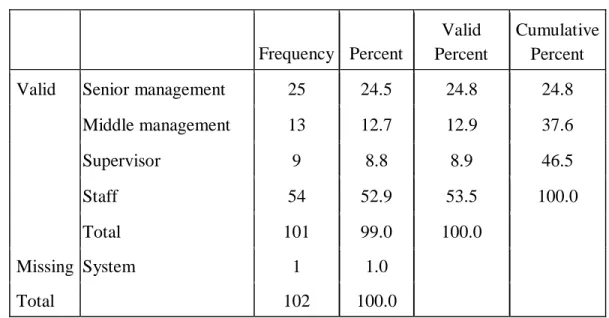Regardless of this sentiment, they felt that they and their companies would hire less legal staff given the opportunity to hire legal AI solutions that add value. Recommendations include legal professionals exploring the advancement and availability of AI solutions with the goal of using them to strategically enhance and strengthen their work functions.
Introduction
The specific application of AI in the field of law and the theory of technological unemployment were the catalysts for formulating the topic of this dissertation. Further motivations for the research will be explored in coming chapters; explore the history of AI and law and its current capabilities, which will form the basis for this dissertation research.
Motivation for the Study
Advocate Experts in the art of presenting and arguing cases in court. Candidate Attorney Learn how to conduct practices including. The topic is being explored because it has a direct impact on legal professionals, especially law firm partners, as it will make them aware of AI solutions that can provide them with a sustainable competitive advantage in performing laborious research and administrative tasks faster.
Focus of the Study
Given these statistics, this research casts its analytical eye towards the Legal Industry whose workload is based on procedural and administrative tasks and seeks to understand whether law firm employees and legal publishers think AI solutions can impact jobs Theirs. While AI has not reached the level where it can replace all specialist roles within the legal industry, it can nevertheless perform some administrative and procedural tasks faster and more accurately than their human counterparts (Remus & Levy, 2015).
Problem statement of the Study
The literature review depicts the progress in the use of AI solutions in the legal industry since the turn of the decade. These effects have prompted the study of the perceived impact of AI Technologies on lawyers in law firms and legal publishers.
Research Questions
This study aims to discover whether the availability and affordability of AI technologies in the legal industry may lead to lawyers and their roles becoming redundant as AI solutions become more advanced. The trend of advancing artificial intelligence, computing power and storage technologies suggests that in the near future, new solutions will emerge for more accurate, consistent and faster results in the fulfillment of legal tasks.
Objectives
Research Methodology
Limitations of the Study
AI in the context of this research are all areas of AI where solutions exist for the legal sector. The focus of the study was only on legal disciplines where AI solutions can perform tasks that legal practitioners can perform.
Structure of Study
This chapter will report the results of the research instrument that was developed and administered in chapter three. The purpose of this chapter was to review whether all the research objectives of the study outlined in chapter 1 had been achieved.
Chapter Summary
The purpose of this chapter was to develop a suitable research design and methodology that can measure and analyze the research variables identified in Chapter 2 of the study. The chapter also identifies the importance of the findings of the research and offers opportunities for future research.
Introduction
An extensive history of academic work has led to today's viable commercial products for the legal industry (Bench-Capon et al., 2012; Rissland, Ashley, & Loui, 2003). The papers presented at the various conferences of the International Conference of Artificial Intelligence and Law (ICAIL) would become the basis of many of the commercial AI solutions available to the legal sector today (Bench-Capon et al ., 2012).
The fields of study within the topic of AI and Law
- Legal Research
- Contract Analysis
- Self-Service Compliance
- Case Outcome Prediction
- Technology Assisted Review (TAR)
In 2016, ROSS Intelligence, the 'world's first AI lawyer' powered by IBM's Watson AI platform, was adopted by global law firms Dentons, Latham and Watkins and was deployed to New York law firm Baker and Hostetler to handle the law firm's bankruptcy practice in 2016 (Mills, 2016). The relevance of the literature reviewed up to this point indicates the maturity of the field of AI and law.
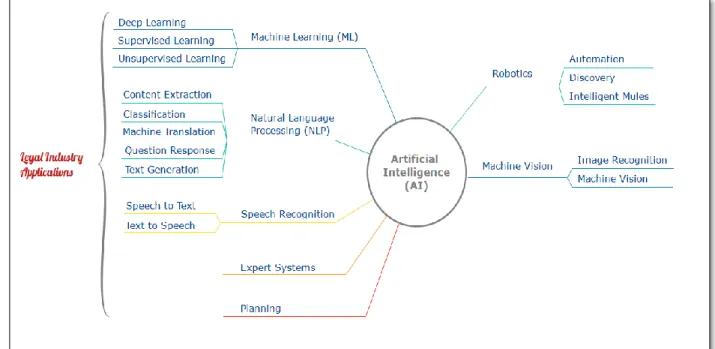
AI and Automation is not mature enough to replace lawyers
Gaps in the literature
The theory was developed in the late 19th century and was proposed at the height of the industrial revolution. A conceptual framework must be established to align the underlying theory with the objectives of the dissertation.
Conceptual Framework
Other companies must gradually adopt new machines to remain competitive, leading to greater adoption of technology and less reliance on human workers. A side effect of the adoption of new technologies is a decrease in the value of the commodity of human labor and thus a decrease in the wage rate for this sector (Boianovsky & Trautwein, 2010).
Chapter Summary
The review then went on to discuss current areas of study in contemporary AI and which of these have the most significant impact in the legal industry. Every story has two sides and while the review up to this point has talked about the current capabilities and success of AI in the legal industry, a counter argument has been made for those who disagree that lawyers are not yet redundant.
Introduction
The Research Process
Research Philosophy
- Positivism
- Critical Realism
- Interpretivism
- Postmodernism
- Pragmatism
- The research philosophy selected for the study
Axiologically, the research is value-free and objective and the researcher is detached, neutral and independent of what is being researched. Axiologically, this philosophy presents value-constituted research, where the researcher and the research are embedded in power relations, which have the characteristic that some narratives are silenced at the expense of others (Calás & Smircich, 1997).
Research Approaches
- Deductive Approach
- Inductive Approach
- Abductive Approach
- The research approach selected for the study
The inductive approach is the reverse of a deductive approach in that data is collected to explore an existing phenomenon and then used to construct theory (Saunders et al., 2016). The inductive approach is exploratory in nature as opposed to the deductive approach, which is explanatory in nature.
Research Methodological Choices
- Quantitative Research
- Qualitative Research
- Mixed Methods Research
- The research methods selected for this study
Prior positivist philosophy and deductive approach choices, as well as the research that has the need to test theory from the collection of data from sample subjects, while ensuring that the researcher remains detached and objective from the respondents being researched, led the researcher to to a quantitative Research Methodology. The additional time constraint placed on the researcher to complete the study led the researcher to adopt a mono-method quantitative study.
The Research Strategy
- Experimental
- Survey
- Archival
- Ethnography
- Action Research
- Grounded Theory
- Narrative
- The research strategy selected for this research
Both methods can be (1) simultaneous (quantitative and qualitative run parallel), (2) sequential research (qualitative methods are followed by quantitative methods), (3) sequential explanatory (quantitative methods are followed by qualitative methods), (4) sequential multiphase (iterative phases quantitative and qualitative methods) (Saunders et al., 2016). According to Saunders et al. 2016) archival strategies can be used for qualitative or quantitative research.
Time Horizon
Cross-sectional Studies
The 'onion' research technique has helped to narrow the research design to the use of a deductive approach with quantitative methodological choices, which is explanatory in nature. The fact that the methodological choice is quantitative directs the research design to collect numerical data.
Longitudinal Studies
The research objective of finding out whether the availability of capable, affordable, return-producing AI software will result in a reduction in the hiring of legal professionals explains the causal relationship, which should be observed and reported. Furthermore, the sample population of legal professionals is too large to survey and as such, a representative sample would need to be drawn to conduct the study.
The time-horizon selected for this research
Research Design
Research Setting
Legal publishers are companies that hire university-educated or licensed attorneys to produce and edit legal documents and manuscripts. Law firms are businesses that employ at least 1 or more fee earners and private lawyers are specialist lawyers who are licensed to represent clients in a court in South Africa.
Sampling Techniques
Probability Sampling
- Simple Random Sampling
- Systematic Random Sampling
- Stratified Random Sampling
- Cluster Random Sampling
- Multi-stage Sampling
According to Saunders et al. 2016) the cluster sampling technique is achieved by (1) selecting a combination of clusters for the sampling frame (2) a unique number for each cluster (3) using random sampling to select a sample of clusters. The disadvantage of this technique is that the sample is less representative of the target population than with the stratified sampling technique.
Non-probability Sampling
- Quota Sampling
- Purposive Sampling
- Snowball Sampling
- Convenience Sampling
A disadvantage of purposive sampling is that the samples may not be representative of the target population. A disadvantage of convenience sampling is that it is prone to bias and influences beyond the researcher's control.
Sampling Technique selected for this research
Sampling Size
Data Collection
The Research Instrument
Due to the nature of the study, a questionnaire proved to be the most appropriate method to determine the relationship between the use of AI solutions in law firms and the effect it may have on the propensity of law firms to hire fewer legal practitioners. Utilization of Artificial Intelligence Solutions – Affordability – 1 Question – (10) o These questions were used to satisfy the third research objective which was: To satisfy.
Measurement Scale
Pilot Testing
Data Analysis
Chi-square goodness-of-fit test: A univariate test was applied to a categorical variable to test whether any of the response options was chosen significantly more/less often than the others. We used binomial tests to check whether a significant proportion of respondents chose one of the two possible answers.
Validity of Research
These analytical techniques were used to determine the strength of the causal relationship between the independent and dependent variable and influence of the mediating and moderating variables.
Reliability of Research
Ethical Considerations
The role of ethical behavior was paramount throughout the research process and the researcher took appropriate steps to ensure that there were no ethical violations. Good ethical behavior was observed by ensuring that respondents were not forced to complete the questionnaire, but were encouraged to complete it by emphasizing the importance of the study to their company and industry in the coming years.
Chapter Summary
The researcher adhered to all ethical considerations by ensuring that the research was carried out objectively, authentically without biased interpretations and by adhering to the guarantees provided to the respondent, by not disclosing confidential information and ensuring that the only valid and truthful inferences have been declared and disseminated.
Introduction
Q11.1.2: The availability of accurate, fast, stable and cost-effective artificial intelligence solutions would make me hire fewer legal professionals. Q11.1.3: I am of the opinion that the availability of accurate, fast, sustainable and cost-effective artificial intelligence solutions would make my company employ fewer legal professionals.
Survey Participation Statistics
- Age of the respondents
- Gender of the respondents
- Positions of respondents
- Job role of respondents
- Job Functions
The spread was that 24.5% of respondents were senior managers, 12.7% were middle managers, 8.8% represented supervisors and the majority of respondents at 52.9% were regular employees, with 1 response being unspecified as to their position in their company. The rest of the job roles were represented with 16.7% being senior members, 2.9% being partners in a law firm, 18.6% being graduate solicitors, 2.9% being company secretaries, 3.9% being paralegals, 14.7 % were legal researchers and 4.9% were administrative researchers.
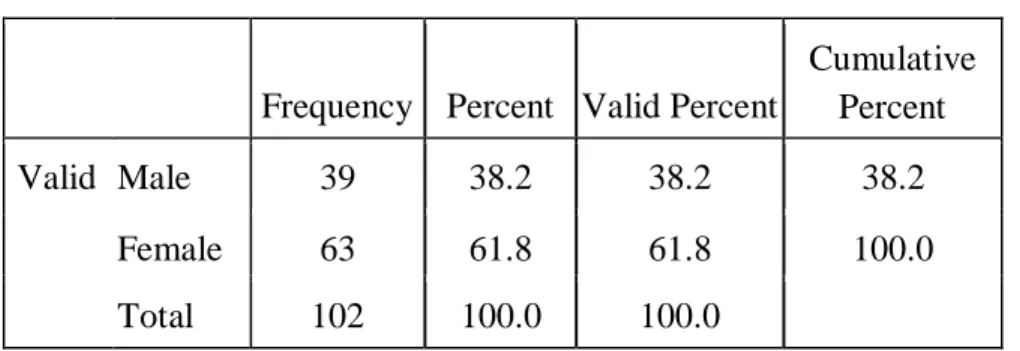
Presentation and Discussion of Results
- RO1: Awareness of advancements of AI in the legal industry
- I am aware of the advancements of AI solutions
- I am aware of the availability of AI solutions
- Discussion of RO1 Results
- RO2: Usage of AI if it was accurate, quick and consistent to use
- Indicate your personal usage of AI solutions in your current job function
- Are you aware of the use of AI Solutions in other departments at your company?
- I would recommend AI Solutions if it was quicker and more accurate, regardless of
- Discussion of RO2 Results
- RO3: Usage of AI if it was affordable
- I would recommend AI Solutions if it was quicker, more accurate and cost effective
- Discussion of RO3 Results
- RO4: Impact on legal professionals at law firms and legal publishers
- I believe that AI solutions are not mature enough yet to replace human legal
- I am of the opinion that the availability of accurate, fast, consistent, and cost effective
- I am of the opinion that the availability of accurate, fast, consistent, and cost effective
- Indicate your opinion on the number of years it will take for AI Solutions to replace
- Influence in adopting AI technologies and/or hiring behaviour in the company
- Discussion of RO4 results
Q8.2: Are you aware of the use of AI solutions in other departments in your company. Are you aware of the use of AI Solutions in other departments in your company.
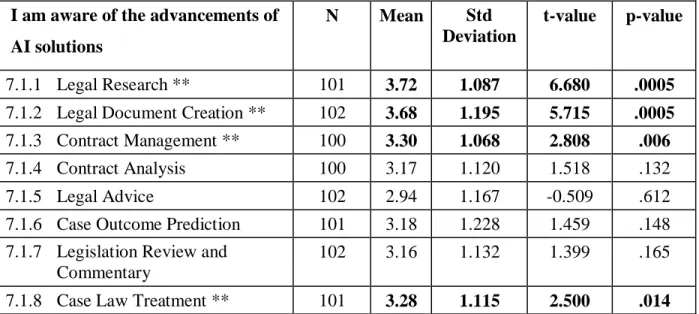
Chapter Summary
AI use and whether the availability of accurate, fast, consistent and cost-effective AI solutions would lead the respondent to hire fewer lawyers (Q11.1.2). Again, the experience that the respondent had with using AI technologies could be a factor in explaining the lack of correlation with why the respondent would not be in favor of hiring fewer lawyers.
Introduction
Conclusions and Recommendations
- Objective 1: Awareness of advancement of AI in the legal industry
- Conclusions for Objective 1
- Recommendations for Objective 1
- Objective 2: Usage of AI if it was accurate, quick and consistent to use
- Conclusions for Objective 2
- Recommendations for Objective 2
- Objective 3: Usage of AI if it was affordable
- Conclusions for Objective 3
- Recommendations for Objective 3
- Objective 4: Impact on legal professionals at law firms and legal publishers
- Conclusions for Objective 4
- Recommendations for Objective 4
Additionally, there was increased awareness of AI software in a subset of the job categories identified in the questionnaire. Therefore, it can be concluded that awareness of AI solutions highlighted its benefits in the minds of respondents.
Significance of the Findings
The second recommendation is that South African tertiary institutions for higher education begin to incorporate the subjects of AI and Law into their Law degree curriculum as is the case at American universities, such as Harvard Law School and the University of Minnesota (Harvard Law School, 2017); University of Minnesota, 2017). Therefore, tertiary institutions must produce a new breed of legal professionals who are au fait with classical legal training, as well as the technological advances of AI.
Recommendations for Further Research
Why the use of AI solutions did not influence the opinion of respondents to advocate investment in AI solutions. Why respondents who did not use AI or were unfamiliar with it advocated its use regardless of cost.
Summary of Chapter
Paper presented at the Proceedings of the 8th International Conference on Artificial Intelligence and Law, St. Paper presented at the Proceedings of the 4th International Conference on Artificial Intelligence and Law, Amsterdam, The Netherlands.

